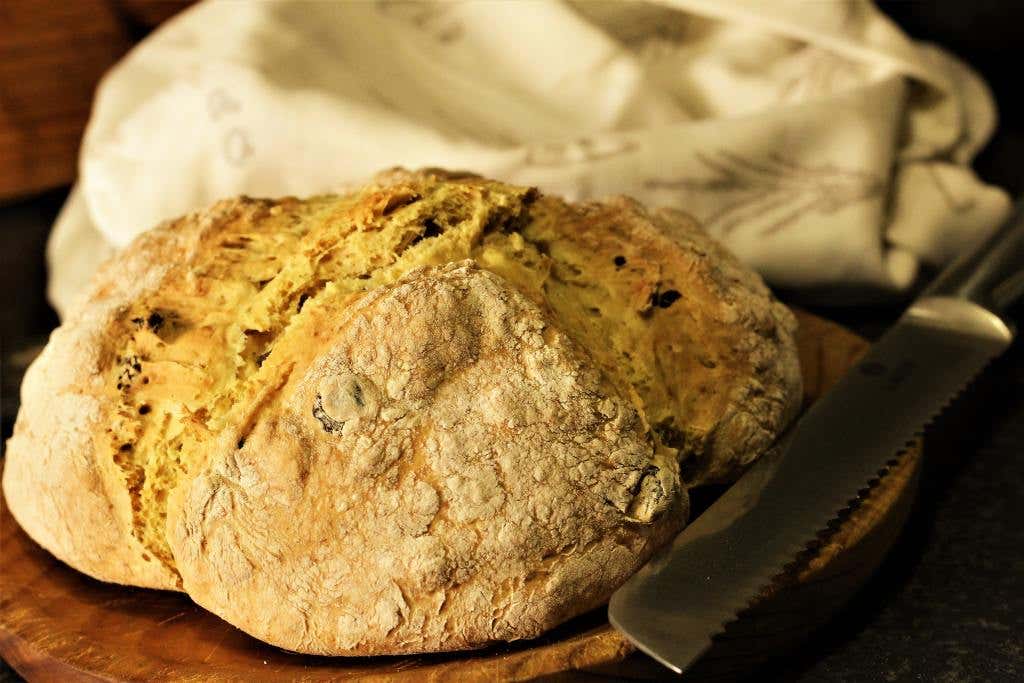
Corned beef, cabbage, and Irish soda bread are essential parts of most Americans' St. Patrick's Day celebrations. What what is Irish soda bread? Per the Institute of Culinary Education, most purists insist that soda bread has just four ingredients: flour, salt, baking soda and buttermilk.
The New York Times notes that, while there have been lots of variations on soda bread, in Ireland, soda bread "tends to be plainer and more restrained."
According to Abagail's Bakery, "Irish Soda Bread is a traditional product of a poor country," hence its simple and basic ingredients. The cross, cut on top of the bread, was "to ward off the devil and protect the household." Families in Ireland in the 1800s lived in isolated farmhouses where most kitchens had only open hearths, not ovens, so the breads that developed were baked on griddles or in large three-legged black iron pots over fires. This resulted in tender and dense bread with a hard crust. The bread was very perishable, so it was made every few days and eaten with the main meal, not as a dessert.
Soda bread doesn't date back to the days of St. Patrick by the way - Saint Patrick's era was around the year 400 AD. The Society For the Preservation of Soda Bread (it's actually a real organization!) says that Native Americans were the first to use soda ash to leaven bread, and soda bread was introduced to the U.K. in the 1830s. As for the simple ingredients, they say, "Flour, salt, baking soda, buttermilk: Anything else added makes it a 'Tea Cake!'"





